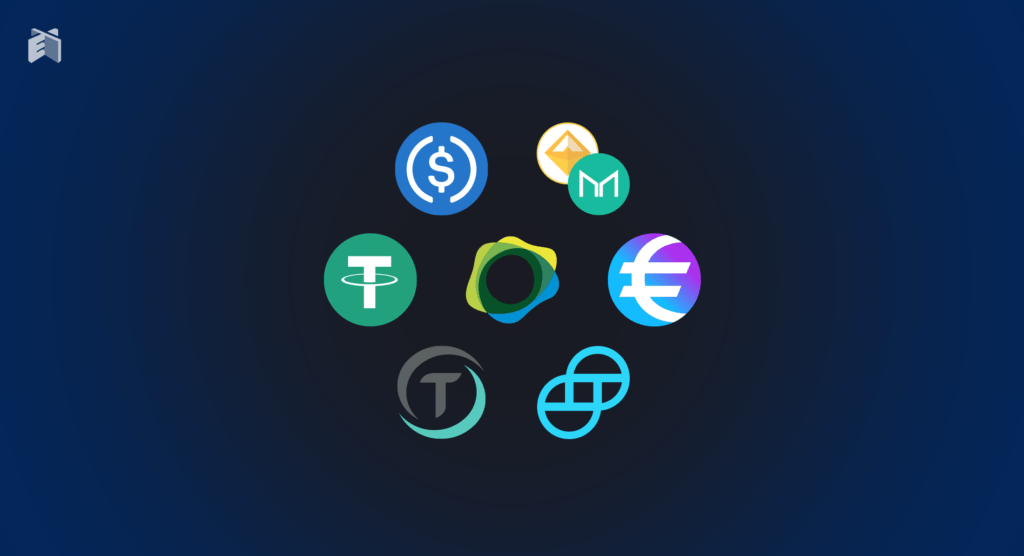What is Stablocoins?
Stableсoins — Stablocoins are cryptocurrencies with a fixed rate or resistant to significant rate fluctuations. This class of digital assets adds low volatility (or almost no volatility) to the well-known advantages of cryptocurrencies. This can be achieved by pegging STBs to various assets (including fiat currencies, gold, SDRs, digital currencies or baskets of cryptoassets), or by reproducing on a decentralized basis some elements of monetary policy used by central banks (the concept of Seigniorage Shares).
What do you need Stablocoins for?
Cryptocurrencies are not only excellent as a medium of exchange, they can also effectively serve as a unit of account and as a means of saving, thanks to their stable exchange rate. This can allow a lot of people to get paid in cryptocurrency without fear of a sharp decline in its exchange rate. Stable currencies can become an alternative to fiat currencies for residents of economically unstable countries with high inflation and significant currency restrictions. Also “stable coins” can be effectively used in the market of cryptocurrency loans and derivatives. In addition, Stable Coins have long been popular among traders who buy more volatile cryptocurrencies “at the bottom,” and then sell them at a higher price during periods of market recovery.
What type of collateral are Stablocoins?
- backed by fiat currencies (examples: Tether, TrueUSD);
- backed by digital currency or a basket of cryptocurrencies (BitUSD from Bitshares, created on the MakerDAO and Ether-backed Dai tokens);
- unsecured (Seigniorage Shares);
How are Stablocoins secured by fiat?
Stableсoins of this type are debentures. Each Stablecoin corresponds to a unit of fiat currency held by a third party (for example, a depositary bank). For example, a user deposits USD into a bank account and receives Stablecoins at a 1:1 ratio. When he wants his dollars back, the issuer will liquidate the appropriate amount of his Stablecoins and return him the required amount in that fiat currency. DigixDAO follows a similar scheme, except that it is backed by gold rather than fiat currency.
What is the peculiarity of cryptocurrency-backed Stablocoins?
Cryptocurrency or a basket of digital currencies is used to back this type of coin. Such coins are usually backed by crypto-assets in a ratio greater than 1:1. Because cryptocurrencies are highly volatile, such high collateral requirements minimize the risks of insolvency of the StablocIns issuer during market crashes.
How the rate of unsecured Stablocoin is maintained
Stableсoins may not be backed by fiat, cryptocurrency, or any other assets. Seigniorage Shares is a concept of cryptocurrencies tied to fiat without requiring collateral in other assets. It involves replicating, on a decentralized basis, techniques similar to those used by central banks.
For example, to maintain the price of a “stable coin,” the issuer algorithmically changes the supply of such Stablocoins. For example, if the price of a “USD substitute” is above the $1 mark, the smart contract will issue additional “stable coins. It will sell them on the open market until the price falls to the target mark. On the other hand, the issuer will buy back tokens in order to support the price of the “stable coin” during periods of excessively low exchange rates. If the possibilities of supporting the exchange rate are exhausted, and the price of Stablocoins is still below $1, the issuer issues the so-called “Seigniorage Shares”. The latter allow the holders of STBs to receive income from the senorage (the issuer’s profit) in the future.
It is not hard to guess that the sustainability of such a system directly depends on the demand for such coins. This scheme can collapse if users lose confidence in such coins (especially if their exchange rate continues to fall, the possibilities of redeeming coins are exhausted, and the demand for Seigniorage Shares is insignificant or absent). Basis and Havven are some examples of such Shares.
What are the advantages and disadvantages of secured fiat Stableсoins?
Benefits
- easy to understand;
- one hundred percent stability (assuming full security);
- low vulnerability to vulnerabilities and risks of network hacking (since the collateral is not contained in the blockchain).
Disadvantages:
- the need to trust a third party, the custodian holding the fiat currency;
- requires another third party, an auditor, to verify that the amount of collateral matches the supply of tokens issued to the market;
- costly and slow to withdraw to fiat;
- high degree of regulation.
What are the pros and cons of cryptocurrency-backed Stablocoins?
Pros:
- no need to rely on a third party to hold collateral;
- a higher level of decentralization;
- onchain transactions allow for more rapid regulation of the supply of “stablecoins”;
- more liquidity than fiat-backed Stablecoins (one onchain transaction is enough to redeem the Stablecoins with the corresponding amount of cryptocurrency);
- higher level of transparency without the need for an external auditor (monitoring is available for everyone).
Minuses:
- less rate stability than fiat-backed Stablecoins;
- probability of automatic redemption into a pledged cryptocurrency if the rate of “stable coins” falls sharply;
- dependent on the viability of another cryptocurrency (or basket of digital assets);
- somewhat more complex system than fiat-backed Stablecoins.
What are the advantages and disadvantages of unsecured Stablecoins?
Benefits:
- no need for collateral;
- theoretically, a higher degree of decentralization and independence because there is no ties to any fiat currencies or crypto-assets (but if the cryptocurrency market generally declines, the demand for Seigniorage Shares may decrease).
Disadvantages:
- more complicated monetary mechanism;
- the need for sustained demand for these kinds of Stablecoins;
- high vulnerability to shocks in the cryptocurrency market (so, in the event of a market crash it may be difficult to redeem such coins);
- difficulty in analyzing and evaluating the viability of such monetary systems.

